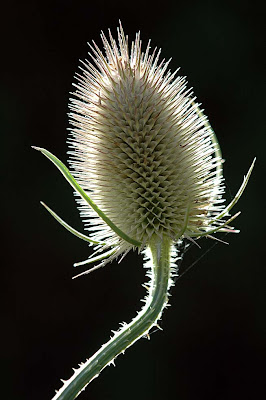
You do need a pretty vivid imagination to come close to understanding how these strange animals perceive their surroundings. Those two eyes, on either side of the turret on top of their body, are not particularly effective and they mostly explore their surroundings using their senses of taste and smell, which are located on their palps, on either side of their mouth (just visible behind the front leg in the picture above - double-click on the image for a larger view)), and on their second pair of legs. Notice how, in the pictures above and below, this harvestman is lifting and extending one of its second pair of legs towards the camera – it’s smelling me. They take great care of that vital second pair of legs and if you watch one of these animals for long enough you’ll notice that it will draw each of this pair of legs through its jaws quite frequently, to keep these sensory limbs clean and in tip-top condition.









































